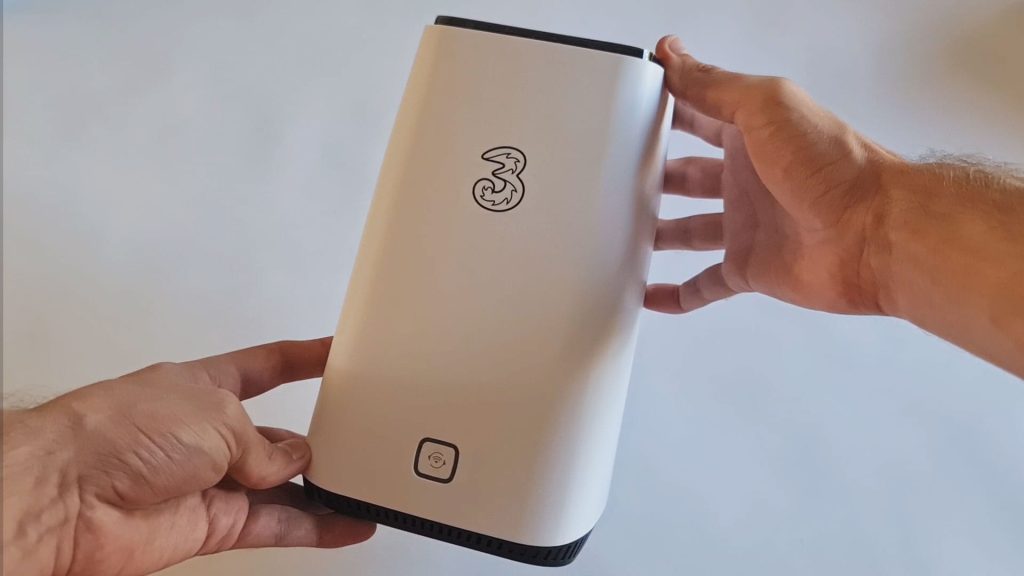Looking for a new fibre broadband provider?
In this article, we’ve explained which fibre broadband providers perform best in testing in Sweden at the moment.
After, we’ve discussed some key things to consider when choosing a fibre broadband provider.
Best fibre broadband in testing
Let’s begin our reviews.
In this section, we’ve taken a look at the five best broadband providers in testing in Sweden in 2025.
1. Ownit Fibre Broadband
Ownit Broadband is the best broadband provider in testing at the moment according to the Svenskt Kvalitetsindex (SKI).
The company has great customer satisfaction, and they provide consistent broadband service. Whether you buy their 100 Mbit/s or 1000 Mbit/s package, you can be confident you’ll get the speeds you’re paying for, all the time.
Another great thing about Ownit is their value for money. Despite the quality of their customer service, they don’t charge extremely high prices. However, there is a small connection fee that you have to pay as a new customer.
When you sign up, you have the option of buying a refurbished Wi-Fi router from Ownit, if you don’t want to supply your own one. This is quite good because it means you don’t have to pay a monthly router rental fee, like you do with some other fibre providers in Sweden.
The other good thing about Ownit is their contract lengths. Normally, you’ll only have to commit for 12 months or so, rather than having to enter into a 24 month contract like you do with many other broadband providers.
Pros
Cons
Overall value rating
⭐⭐⭐⭐⭐
Price
2. Telenor Fibre Broadband
Telenor is another fibre broadband provider that performs well in testing, although not quite as well as Ownit.
They offer the same range of broadband tariffs as the company we just reviewed, with download and upload speeds of up to 1000 Mbit/s.
The difference is, Telenor can sometimes be a tiny bit cheaper, in terms of their monthly costs. They often run promotions that lower the price during the initial binding period (normally 12 months), making them very good value for money for the first year.
Telenor does charge a connection fee, and it’s often higher than Ownit’s. However, you get a Wi-Fi router included for free on loan, meaning you’ll save a decent bit of money if you don’t already have a suitable router you can use.
Overall, if you don’t mind choosing the provider that doesn’t perform best in testing, and want good value fibre broadband, Telenor is a great choice.
Just remember that after the initial promotion ends, your monthly costs will go up a fair bit. It’s important to be ready to switch providers or enter into another agreement in 12 months’ time, when your monthly cost goes up.
Pros
Cons
Overall value rating
⭐⭐⭐⭐
Price
3. Tre Mobile Broadband
Tre provides wireless internet using the 4G and 5G network, rather than offering fibre broadband connections.
The downside of using mobile broadband is your latency will be a bit higher. This can affect your experience when playing online games, but it’s not noticeable the majority of the time.
The best thing about Tre is they offer very fast download speeds for a reasonable monthly cost, if you can get 5G at your address. Use their postcode checker to see if you have Tre 5G service.
Plus, there are no setup costs, and no router rental fees, although you do have to commit for 24 months.
Also, Tre performs very well in testing, compared to most fibre broadband providers. Although they use different technology, Tre customers are very satisfied with their broadband service.
And if you’re unsure whether mobile broadband will be good enough for your household, you can try Tre 5G internet for 14 days, with no obligation. If your speeds or latency aren’t good enough, you can cancel the service during the first two weeks, and leave the contract.
Pros
Cons
Overall value rating
⭐⭐⭐⭐⭐
Price
4. Telia Fibre Broadband
Telia is not the cheapest fibre internet provider in Sweden. However, they do perform well in SKI testing.
When comparing their fibre broadband deals to others with similar download speeds, Telia’s monthly costs are normally going to be a bit higher than Ownit’s, or Telenor’s.
However, with Telia, you won’t normally pay an upfront cost. Plus, their broadband tariffs only require a 12 month commitment.
The other good thing about Telia is their Wi-Fi router is included for free. You don’t have to pay more to buy it from them.
Also, Telia has a stronger connection guarantee than most other broadband providers. If your broadband goes offline, or you experience slow speeds, Telia will send you a mobile broadband device to keep you online – most other providers don’t offer this to their customers.
Pros
Cons
Overall value rating
⭐⭐⭐⭐⭐
Price
5. Allente Fibre Broadband
Allente is not the best in testing compared to the other four providers on this list, but they do offer good value for money, especially on their slower 100/100 Mbit/s broadband plans.
Although you do have to commit to a 24 month binding period when joining this provider, they have no connection costs, which is great, although there may be a small shipping fee for the Wi-Fi router.
Speaking of the router, if you do decide to get Allente’s device, you’ll need to pay a monthly fee for it over the life of the contract. You can’t buy it outright, and the monthly cost is quite expensive, which is a bit annoying. It’s best to avoid renting the router from Allente if you can – instead, buy one separately from a different retailer.
You’ll also notice when joining Allente that they push their IPTV offers quite hard. The range of channels they have is great, but if IPTV isn’t of interest, make sure to opt out of the default TV package when going through the checkout process.
Ultimately, if you’re looking for a provider with above-average customer satisfaction, Allente isn’t the best choice. But if you want cheap 100/100 or 250/250 broadband, and you’re prepared to buy a router separately, or bring your own one, they offer good value for money.
Pros
Cons
Overall value rating
⭐⭐⭐⭐
Price
What you need to know

In this part, we’ve explained some key things to consider when shopping for a fibre broadband plan.
What does “best in testing” mean?
Each year, the Svenskt Kvalitetsindex (SKI) performs research into the customer satisfaction of major Swedish companies in different categories, including broadband.
The company that performs best in testing each year is widely regarded to be the best overall Swedish broadband provider, in terms of speeds, reliability, customer service, and value for money.
This is why, when shopping, many Swedes look for broadband providers that perform well in SKI tests.
It’s important to note, some other organisations also review the performance of Swedish broadband providers. However, SKI is recognised as the best review company – they perform the most extensive testing, and they have the best reputation for assessing the true performance of different broadband providers.
Which is the best broadband provider in testing?

Currently, as of last year, Ownit is the best broadband provider in testing, according to SKI research.
Despite being a relatively small operator, Ownit outperformed Telenor, Telia, Allente, and all other major providers in testing. They have the most consistent speeds and the best customer service.
How are broadband providers tested?
The main way that the Svenskt Kvalitetsindex (SKI) tests the performance of different broadband providers is through customer surveys.
SKI finds real customers of each Swedish broadband provider, and asks for their opinions about the company’s speeds, reliability, and customer service, among other issues.
The organisation, which is part of the larger Nordic EPSI Rating Group, does not normally perform actual tests of people’s broadband connections. However, the investigations they perform using customer insights are very thorough, and do delve into speeds, latency, and other performance indicators.
How much does it matter if a broadband provider does well in testing?

The good thing about a broadband provider that does well in testing is it means that their customers are satisfied with their service.
Since the quality index mostly focuses on customer opinions, if a company scores well, it normally means that its customers are happy with the quality of the service and the customer support they’re receiving.
However, just because a provider does well in testing doesn’t mean that they’re necessarily the best company to choose. It’s also important to consider what prices they charge, among other factors, which we’ve discussed in more detail below.
What else to consider when choosing a broadband provider
Apart from a given broadband provider’s SKI rating, it’s also important to consider some of these other factors when choosing a company to buy from.
- Their monthly costs.
- Their setup or connection costs.
- How you’ll get a Wi-Fi router, and what Wi-Fi router you’ll receive. Will the provider rent or sell you one? And will it be WiFi 6 compatible, giving you better signal?
- How long the contract is. Would you prefer a 12 or 24 month commitment?
- Any promotions or discounts currently on offer. For example, some providers offer a lower price for the first six months of the contract.
Fibre broadband vs mobile broadband

While we have mostly focused on fibre broadband providers in this guide, you might also be considering using mobile broadband, if you want a cheap, good-quality interest connection.
The main benefit of mobile broadband is it can offer the same or better download speeds as fibre, for a slightly lower price, especially if you can get 5G internet where you live.
With mobile broadband, your router will connect to the internet wirelessly, using 4G or 5G, just like your phone. This means getting set up will be cheaper – an engineer visit isn’t normally necessary.
While mobile broadband can be very fast, especially with 5G, it will normally have a higher latency than using fibre broadband. It’s not the best choice for competitive online gaming, such as playing Counter-Strike.
To learn more about mobile broadband, read our review of Tre 5G internet.
How to save money on broadband
While it’s great to use a broadband provider that has good customer service, it’s also nice to avoid paying too much for your home internet connection.
Here are some ways to save money on broadband, if you’re looking to reduce your monthly bill.
- Only pay for the internet speed you actually need. For most households, a 500 Mbit/s or 1000 Mbit/s broadband package isn’t really necessary, unless you often download or upload large files.
- Ensure to check the prices of at least four or five providers before buying. It pays to shop around for the cheapest deal.
- Consider using mobile broadband instead of fibre, if you don’t need a super-low latency – it’s often a much cheaper way of getting online.
- Try to avoid paying a monthly router rental fee if you can. It’s often cheaper to buy a router upfront instead.
Conclusion
This is the end of our buyer’s guide.
For most people, if you’re looking for the best fibre broadband provider in testing, we recommend Ownit. They have very high customer satisfaction compared to the average provider, and also offer very reliable service.
If you’re still not sure which fibre internet provider to choose, feel free to leave a comment below, and we’ll respond as soon as we can.

I’m Roger, and I’m the founder of Broadband 4 Europe.
I grew up in Switzerland but live in Germany now, and also lived in South Tirol for a while in the past.
I have a background in IT and have performed extensive research into the broadband markets of most major European countries. Learning about fixed-line broadband markets is my nerdy hobby, but I’m also excited by the possibilities that 5G (and eventually 6G) broadband will provide us in the future.
When I’m not researching broadband companies and their networks, you’ll find me playing volleyball or the piano.










